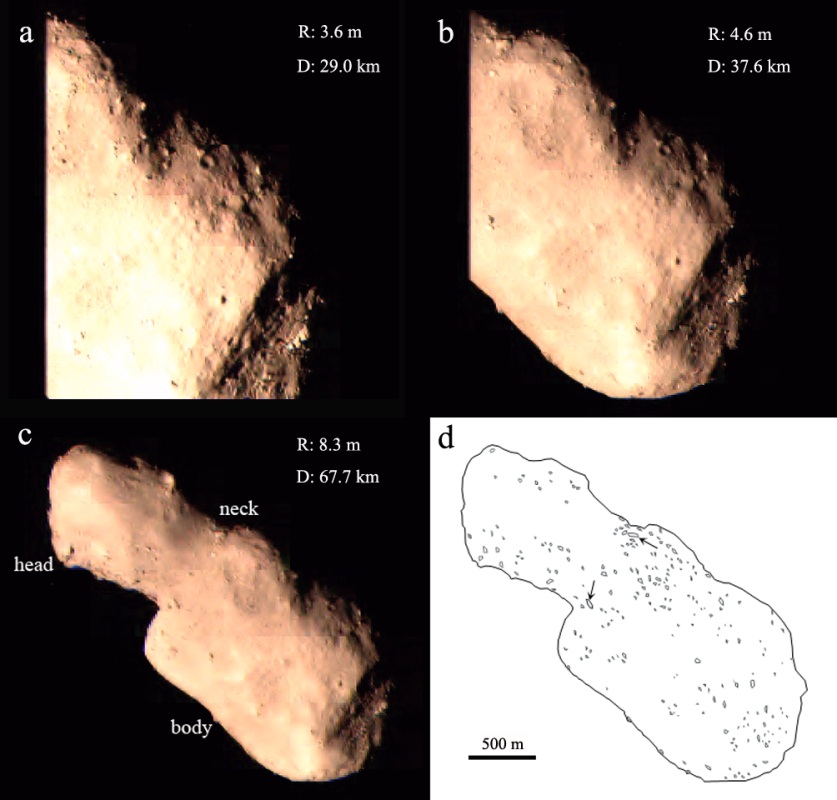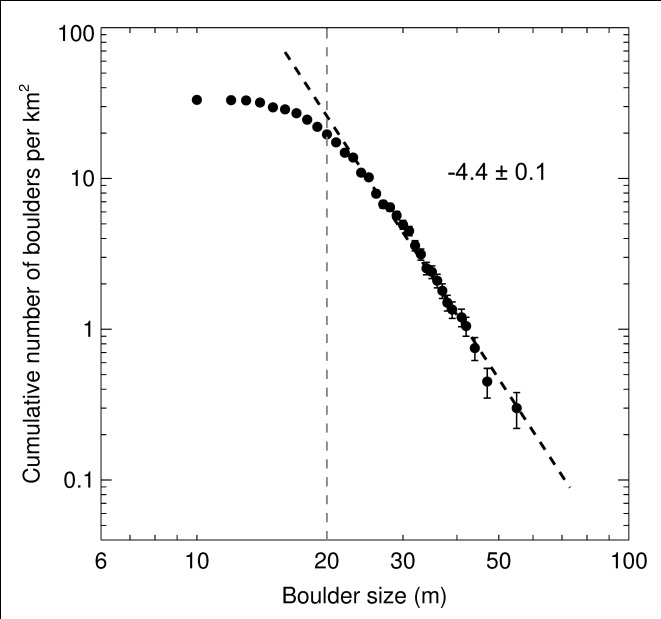New Work about Boulders on Asteroid 4179 Toutatis Accomplished by Purple Mountain Observatory

Fig. 1 Outbound images display boulders on the surface of Toutatis (from a to c) and their detailed positions in the sketch map (d). (Image by JIANG Yun)

Fig. 2 The cumulative size-frequency distribution of boulders per unit area on the entire imaged surface of Toutatis. (Image by JIANG Yun)
In this work, a total of 222 boulders were identified over the imaged area (~ 6.68 km2) (Fig. 1). They have sizes ranging from 10 to 61 m, with an average size of 22 m. The number density of boulders larger than 20 m over the Toutatis’ surface is ~ 17/km2, which is a bit smaller than that of Itokawa (~ 30/km2), but much larger than that of Eros (~ 2/km2).
The stark difference between Eros and Toutatis may result from the diverse formation process of boulders. The cumulative size-frequency distribution (SFD) of boulders per unit area exhibits a slope (power-index) of -4.4 ± 0.1 (Figure 2), which is indicative of great degree of fragmentation. Similar to Itokawa, Toutatis probably has a rubble-pile structure, as most boulders on its surface cannot solely be explained by impact cratering. In addition, the cumulative crater SFD has been used to estimate a surface crater retention age of approximately 1.6 ± 0.3 Gyr.